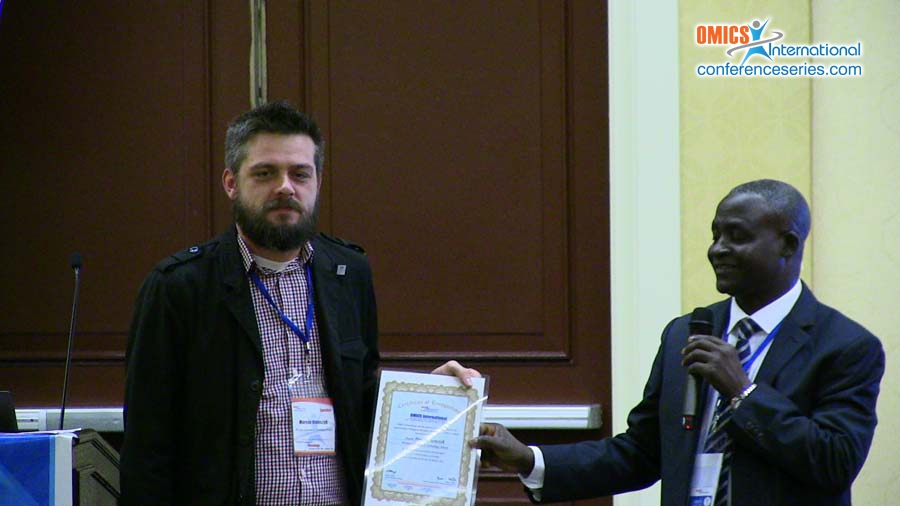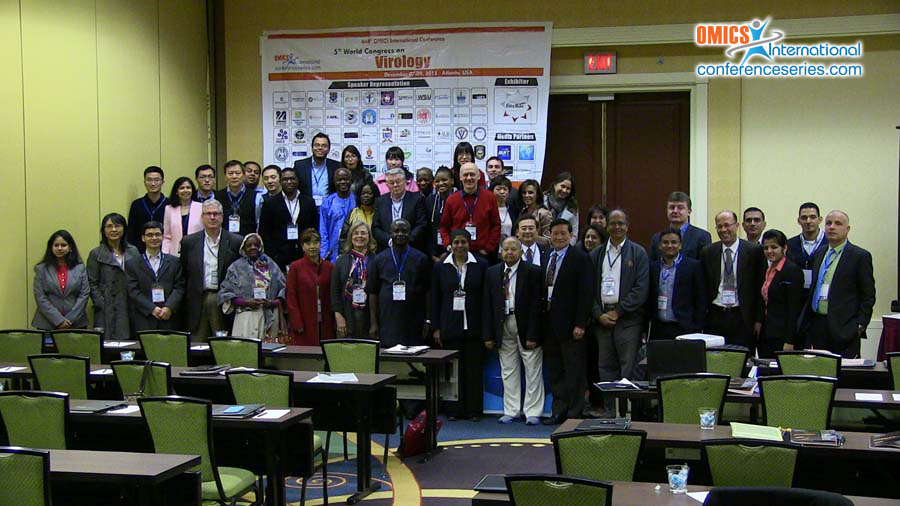
Marcin Sieńczyk
Wroclaw University of Technology,Poland
Title: Targeting viral serine proteases with phosphonic inhibitors
Biography
Biography: Marcin Sieńczyk
Abstract
For several viral species the successful and complete life cycle, which leads to the production of new virons, requires the activity of specific, viral genome-coded serine protease. The primary function of this protease is the cleavage of viral polyprotein releasing structural and non-structural viral proteins essential for virus replication and the assembly of new virus particles [ ]. We have focused our attention on two viruses belonging to Flaviviridae family – hepatitis C virus (HCV) and West Nile virus (WNV). HCV is a small, enveloped, positive-sense single-stranded RNA virus which can cause acute or chronic infection. It has been estimated that 130–150 million people live with chronic hepatitis C infection worldwide. Unfortunately no effective vaccine for HCV is available. One of the most promising molecular targets for anti-HCV therapy is a protease, which is a part of the bifunctional nonstructural protein 3 (NS3/4A). All of already approved for the treatment of HCV infection compounds display a reversible-type of inhibition. Nevertheless, the appearance of the inhibitor-resistant mutant strains limits the efficiency of the overall treatment. WNV was isolated from human in 1937 in the West Nile district of Uganda. In 1997 highly virulent strain appeared in Israel and caused death of various bird species. In 1999 a pathogenic WNV strain was brought to New York leading to a dramatic outbreak which started to spread throughout Americas. Although the lifecycle of WNV involves the transmission of virus between birds and mosquitoes, various mammalian species, including human and horses, can be infected causing a fatal neurological disease. Currently no vaccine nor effective treatment are available. A viral serine protease (NS2B/NS3) has been considered as an attractive target for the development of novel anti-WNV agents since its inactivation blocks the replication of the virus. Here we report the development of α-aminoalkylphosphonate diaryl esters as well as their peptidyl derivatives as potent, active site-directed and irreversible inhibitors of HCV NS3/4A and WNV NS2B/NS3 proteases. One of the advantages of α-aminophosphonic inhibitors is their specificity of action toward serine proteases and lack of reactivity with cysteine, aspartyl and metalloproteinases [ ]. Moreover, even for two serine proteases of similar substrate recognition profile, a selective and potent phosphonic inhibitor may be developed. Considering high stability in human plasma, irreversible mechanism of action and low toxicity α-aminoalkylphosphonates represent an interesting class of inhibitors for novel antiviral agents development.



